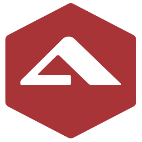Jan 11, 2024
No image

Service categories
Service Lines
Big Data
QA and Testing
Domain focus
Healthcare
Other
Programming language
C#
Frameworks
.NET
Subcategories
Big Data
Data Analytics
Data Migration
QA and Testing
Compliance
Load
Challenge
In the course of the project, the following challenges were outlined:
1. The openEHR standards are constantly evolving, so the system should be flexible enough to maintain the changing demands.
2. The healthcare industry has a variety of regulations / standards, which the system should meet.
3. Using the Guideline Definition Language (GDL), the medical staff can set up various algorithms / processes for analyzing patient data. So, the system should be adaptive to the challenges applied.
4. Only a Java implementation of the system’s module for parsing GDL data existed, while the solution was developed in .NET.
In the course of the project, the following challenges were outlined:
1. The openEHR standards are constantly evolving, so the system should be flexible enough to maintain the changing demands.
2. The healthcare industry has a variety of regulations / standards, which the system should meet.
3. Using the Guideline Definition Language (GDL), the medical staff can set up various algorithms / processes for analyzing patient data. So, the system should be adaptive to the challenges applied.
4. Only a Java implementation of the system’s module for parsing GDL data existed, while the solution was developed in .NET.
Solution
The legacy system, initially using RTF files, required an openEHR compliance upgrade. Altoros developed an XSLT module for transforming openEHR data to the RTF format. The Guideline Definition Language (GDL) set up algorithms for analyzing patient data, allowing processes like risk estimation and alerting. Altoros delivered a GDL parser and a runtime for workflow implementation. Transforming the Java version of the GDL editor to .NET, they enabled seamless integration. Our specialists enhanced data validation, simplifying error detection and alert generation. Leveraging Oracle BI Publisher, a module for data analysis and dynamic report-building was crafted. Rigorous unit testing (85–90% coverage) ensured flawless system performance.
The legacy system, initially using RTF files, required an openEHR compliance upgrade. Altoros developed an XSLT module for transforming openEHR data to the RTF format. The Guideline Definition Language (GDL) set up algorithms for analyzing patient data, allowing processes like risk estimation and alerting. Altoros delivered a GDL parser and a runtime for workflow implementation. Transforming the Java version of the GDL editor to .NET, they enabled seamless integration. Our specialists enhanced data validation, simplifying error detection and alert generation. Leveraging Oracle BI Publisher, a module for data analysis and dynamic report-building was crafted. Rigorous unit testing (85–90% coverage) ensured flawless system performance.
Results
By partnering with Altoros, the customer significantly improved its advanced healthcare system used by 80,000+ medical personnel daily in regional health trusts, including five of the six university hospitals. Alongside with meeting the openEHR standards, the system allows for data analysis, report building, and sending alerts to healthcare staff. The solution also features decision-support functionality that helps to evaluate risks of diseases based on patient data.
By partnering with Altoros, the customer significantly improved its advanced healthcare system used by 80,000+ medical personnel daily in regional health trusts, including five of the six university hospitals. Alongside with meeting the openEHR standards, the system allows for data analysis, report building, and sending alerts to healthcare staff. The solution also features decision-support functionality that helps to evaluate risks of diseases based on patient data.
